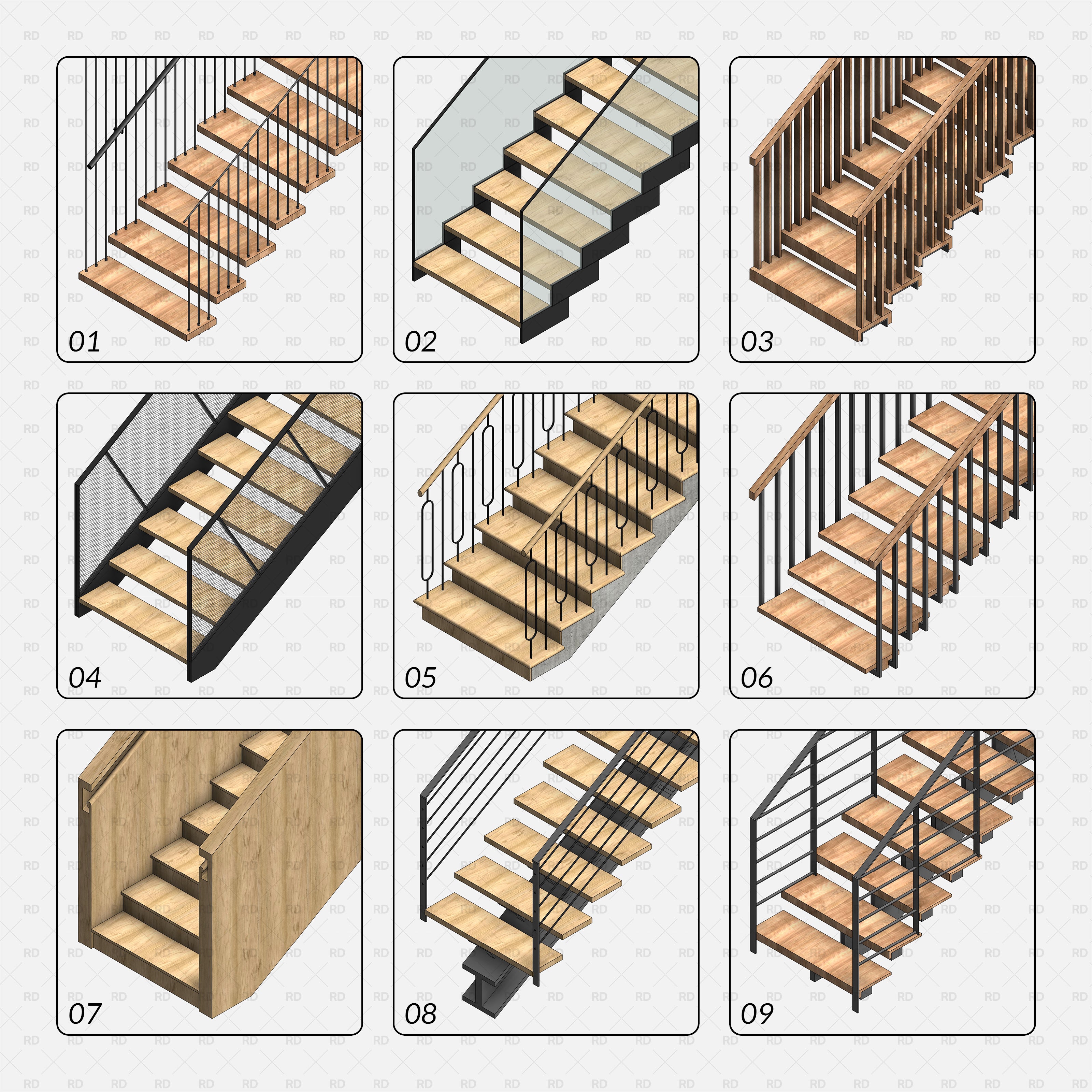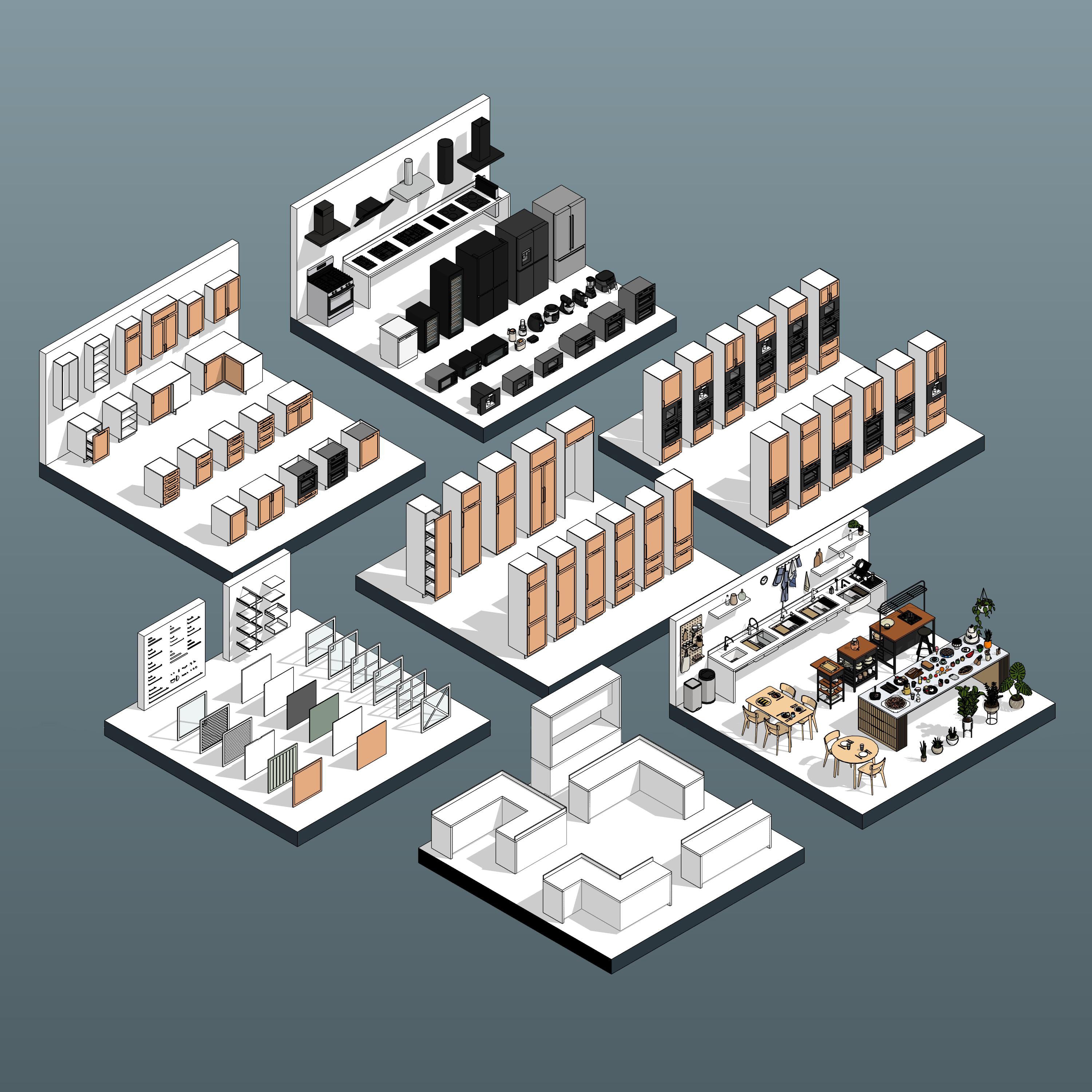Revit Kitchen Work Triangle

Revit Family for Kitchen Design: Understanding the Kitchen Work Triangle Planning Rules
As an architect or interior designer, you know that designing a kitchen requires careful planning. You need to consider the layout, functionality, and aesthetics of the space to ensure that it meets the needs and preferences of your clients. One of the key principles that can guide your kitchen design is the kitchen work triangle planning rule. In this article, we will explore this concept and how you can use our Revit Kitchen Work Trianlge Family to plan the kitchen space.

What is the Kitchen Work Triangle?
The kitchen work triangle is a design concept that was developed in the 1940s to optimize the functionality of the kitchen. It is based on the idea that the three primary work areas in a kitchen, namely the sink, stove, and refrigerator, should form a triangle. This arrangement minimizes the distance and effort required to move between these areas, allowing for efficient and seamless workflow.
The distance between the three points of the triangle should be between 1.2-2.7 m (4-9 feet), with the total perimeter of the triangle ranging from 4-8 m (13-26 ft). The work triangle should also be free of obstacles such as cabinets, islands, and appliances to allow for easy movement.

Work Triangle Planning Rules
- No leg of the triangle should be less than 1.2 m (4 ft) or more than 2.7 m (9 ft).
- The sum of all three sides of the triangle should be between 4-8 m (13-26 ft).
- Cabinets or other obstacles should not intersect any leg of the triangle by more than 30 cm (12 in).
- If possible, there should be no major traffic flow through the triangle.
- A full-height obstacle, such as a tall cabinet, should not come between any two points of the triangle.
Besides the work triangle itself, there are several rules of thumb to consider when planning a kitchen:
- As measured between countertops and cabinets or appliances, work aisles should be no less than 110 cm (42 in) for one cook, or 120 cm (48 in) for multiple cooks.
- A sink should have a clear counter area of at least 60 cm (24 in) on one side, and at least 45 cm (18 in) on the other side.
- A refrigerator should have a clear counter area of at least 40 cm (15 in) on the handle side; or the same on either side of a side-by-side refrigerator; or the same area on a counter no more than 120 cm (48 in) across from the refrigerator.
- A stove or cooktop should have a clear 40 cm (15 in) area on one side, and at least 30 cm (12 in) on the other side.
- At least 91 cm (36 in) of food preparation area should be located next to the sink.
- In a seating area where no traffic passes behind the diner, allow 80 cm (32 in) from the wall to the edge of the table or counter; if traffic passes behind the diner, allow 110 cm (44 in).
Using Revit to Plan the Kitchen Space
Revit is a powerful tool that can help you plan and visualize the kitchen space. Our Kitchen 9 Fast Design Layout Revit Families for kitchen design includes 9 most popular Kitchen Layouts for creating super fast kitchen designs and planning. The Families are completly parametric so you can easily drag and drop the sink, stove, and refrigerator into the model and adjust their position to form the work triangle.
To add detailed cabinets, electrical qeuipment, plumbing fixtures and other elements to create a complete layout of the kitchen, you can use our Professional Kitchen Revit Families:

One of the benefits of using Revit Kitchen Work Triangle Family for kitchen design is that it allows you to easily modify the layout and make adjustments as needed. You can experiment with different configurations and visualize how the space will look before making any changes in the real world. This can save time and money and help you deliver a design that meets the needs and preferences of your clients.
Debating the Kitchen Work Triangle
While the kitchen work triangle has been a popular design concept for decades, it is not without its critics. Some designers argue that the triangle is too simplistic and does not take into account the varied needs and habits of different households. They suggest that alternative planning methods, such as the zone-based approach or the use of multiple work triangles, can better accommodate the diverse needs of modern kitchens.
While it is true that the kitchen work triangle is not a one-size-fits-all solution, it remains a useful tool for guiding kitchen design.
Conclusion
Designing a kitchen can be a complex process that requires careful consideration of various factors. The kitchen work triangle planning rule is a valuable tool that can help you optimize the functionality of the space. By using our Revit Kitchen Work Triangle Family for kitchen design, you can easily incorporate the work triangle into your layout and experiment with different configurations. While the work triangle is not the only planning method available, it remains a useful guide for creating efficient and seamless workflow in the kitchen.












Leave a comment